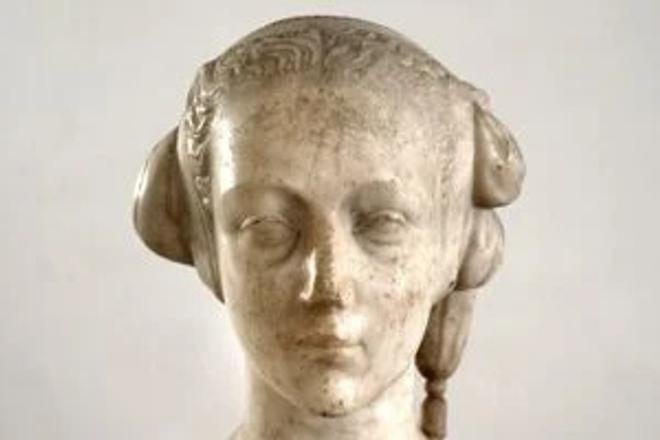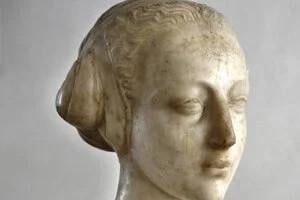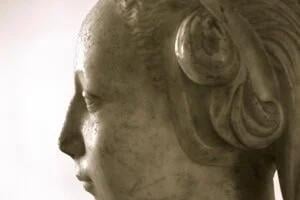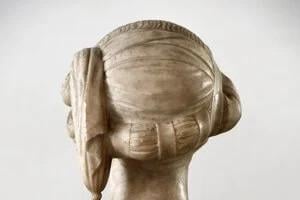For decades, a marble bust of a young woman lay forgotten in storage at the Spiš Museum in Levoča, labelled simply "marble bust of a woman by an unknown artist." However, after extensive research by Marta Herucová from the Slovak Academy of Sciences (SAV), experts are now almost certain that the sculpture is an original work by the Renaissance master Donatello.
Created in mid-15th century Florence, the Bust of Cecilia Gonzaga likely arrived in Slovakia due to historical ties between the noble Gonzaga family of Mantua and the Csáky family, former owners of the bust. Its rediscovery is a major event for the Slovak art world, yet the public has never seen the piece and debate is continuing about how it should be securely exhibited.
A tumultuous journey
The bust was originally housed in the Csáky family's manor in Spišský Hrhov. When the family left after World War II, the mansion became a girls' reformatory, where the sculpture suffered neglect. "We know the girls played with it – sometimes they even used it as a ball – and once even drew eyeliner around its eyes," recalled former Spiš Museum director Mária Novotná, who initiated research into the bust.
Transferred to the museum in 1975, it was initially catalogued as a 19th-century imitation. Even Herucová, who worked on verifying its authenticity, first assumed it was a copy. "But the more I researched, the more I became convinced that it could be an original."
The key clue was an inscription on the lower part of the bust, Opus Donatelli, which matched Donatello’s known signatures. The artist signed only a handful of his works, such as Judith and Holofernes, and Prophet Habakkuk. If confirmed, the bust would be just the eighth work by Donatello that is known to have been signed.
A unique subject
Cecilia Gonzaga, a 15th-century noblewoman, refused an arranged marriage and entered a convent at 16. "She was an extraordinary woman, and it is extraordinary that this bust was created," said art historian Mária Pötzl-Malíková. Portrait busts were rare in Donatello’s time, making this discovery even more remarkable.
How the bust arrived in Slovakia remains a mystery. The Csáky and Gonzaga families had connections dating back to the 17th century, and some Gonzagas were prominent at the Viennese court, making several possible routes for its arrival plausible.
The future in question
Since its identification, the bust has been stored under strict security and the general public can now see it only by means of a 3D presentation. While experts want it to be displayed in Levoča, concerns have been raised about the Slovak museum system’s ability to protect such treasures. "We see museum collections in the hands of political appointees without expertise," warned Ivana Rumanová from the Open Culture! platform.
The recent dismissal of the museum’s director without explanation has only added to the uncertainty. "Whoever takes on this role must ensure the highest level of protection for this priceless work – and ideally, make it accessible to the public," Rumanová stressed.
Gaps in local art expertise were highlighted ten years ago, when a bust that had been in private ownership in Slovakia was sold via a Slovak auction house to a foreign buyer for €24,000. Its export was authorised by the Ministry of Culture, only for the artwork to be later identified as the work of Italian Baroque sculptor Gian Lorenzo Bernini and sold by Sotheby's in London for $30 million. It is now on display at the J. Paul Getty Museum in Los Angeles.


 For decades, a marble bust of a young woman lay forgotten in storage at the Spiš Museum in Levoča, labelled simply "marble bust of a woman by an unknown artist." However, after extensive research by Marta Herucová from the Slovak Academy of Sciences (SAV), experts are now almost certain that the sculpture is an original work by the Renaissance master Donatello. (source: Peter Župník)
For decades, a marble bust of a young woman lay forgotten in storage at the Spiš Museum in Levoča, labelled simply "marble bust of a woman by an unknown artist." However, after extensive research by Marta Herucová from the Slovak Academy of Sciences (SAV), experts are now almost certain that the sculpture is an original work by the Renaissance master Donatello. (source: Peter Župník)


